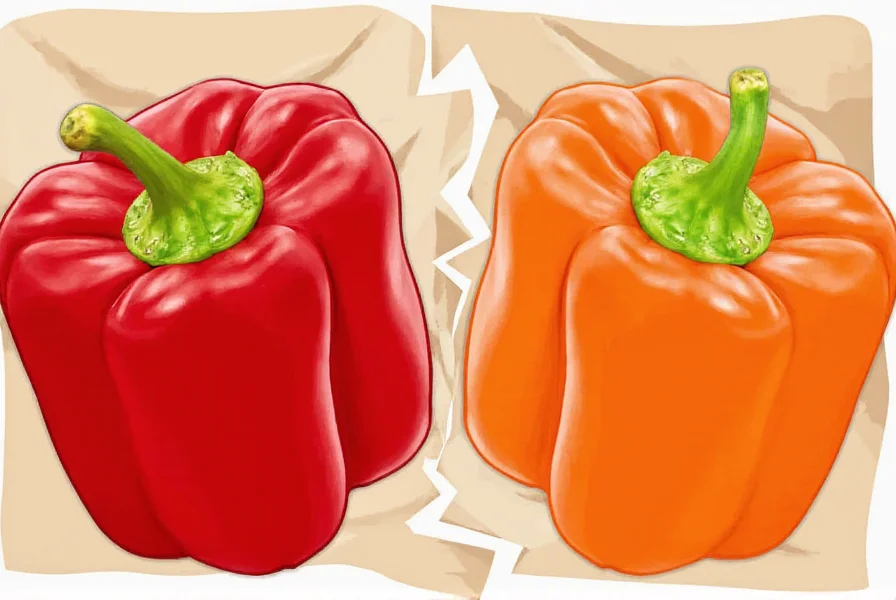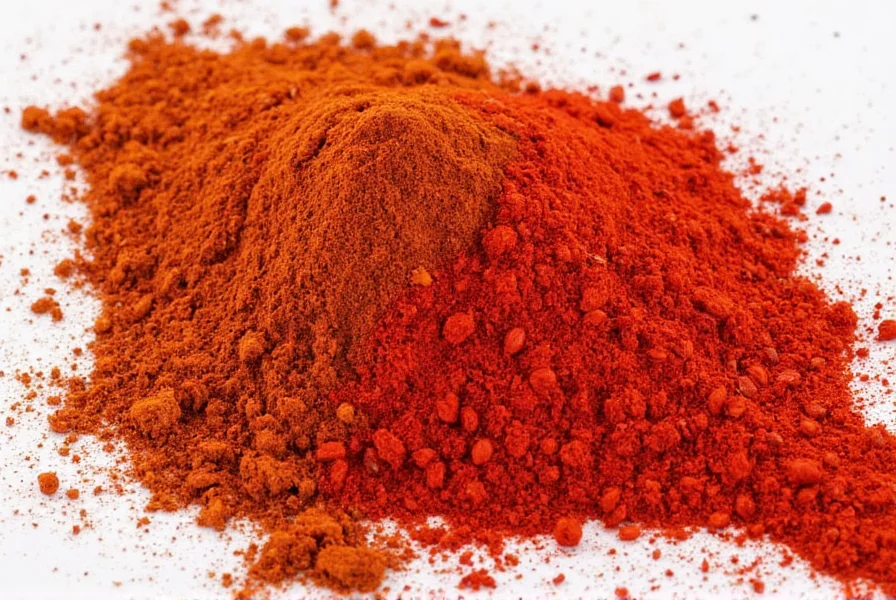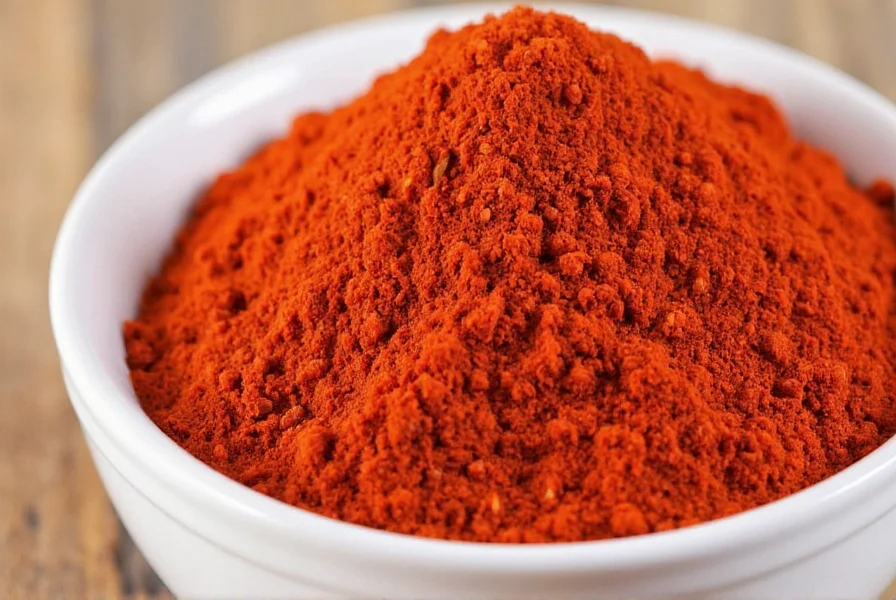No, paprika and sweet paprika are not exactly the same. While all sweet paprika is paprika, not all paprika is sweet. Paprika refers to the ground spice made from dried peppers, which comes in several varieties including sweet, hot (or spicy), and smoked. Sweet paprika specifically denotes the mild, non-spicy variety that provides vibrant color and subtle pepper flavor without heat.
When you're standing in the spice aisle wondering whether you can substitute one for the other in your recipe, understanding the difference between paprika and sweet paprika becomes crucial. This confusion is common among home cooks, especially when recipes call for "paprika" without specifying which type.
What Exactly Is Paprika?
Paprika is a ground spice made from dried peppers belonging to the Capsicum annuum species. Originating in Central America but perfected in Hungary, this vibrant red powder has become a staple in kitchens worldwide. The peppers used for paprika range from mild to hot varieties, which is why paprika itself comes in different heat levels.
The color can vary from bright orange-red to deep blood red depending on the pepper varieties used and processing methods. High-quality paprika should have a rich, slightly sweet aroma with notes of dried fruit and subtle earthiness.

The Main Types of Paprika Explained
Understanding the paprika family tree clears up much of the confusion. Here are the primary categories you'll encounter:
| Type of Paprika | Heat Level | Flavor Profile | Common Uses |
|---|---|---|---|
| Sweet Paprika | Mild (0-500 SHU) | Sweet, slightly fruity, bell pepper-like | Goulash, deviled eggs, potato salad, coloring dishes |
| Hot Paprika | Medium to Hot (5,000-15,000 SHU) | Spicy with underlying sweetness | Spicy stews, chorizo, some Mexican dishes |
| Smoked Paprika (Pimentón) | Mild to Hot | Distinct smoky flavor, varying heat | Paella, barbecue rubs, roasted vegetables |
Why Sweet Paprika Is a Specific Category
Sweet paprika represents the mildest category of paprika, made exclusively from sweet pepper varieties with no significant capsaicin content. The "sweet" designation specifically means absence of heat, not that it contains sugar or has a sugary taste.
When recipes simply call for "paprika" without specification, they typically mean sweet paprika, especially in American and Central European cooking contexts. However, this isn't universal—some regional recipes might assume hot paprika as the default.
Regional Differences in Paprika Terminology
The confusion around paprika types partly stems from regional naming conventions:
- Hungarian paprika: Comes in 8 official grades, with "Édesnömértő" being the sweet variety most common internationally
- Spanish pimentón: Often specifies "dulce" (sweet), "agridulce" (bittersweet), or "picante" (hot)
- American paprika: Typically refers to the sweet variety unless labeled otherwise
This regional variation explains why you might find "paprika" meaning different things depending on where the recipe originated. When following international recipes, checking the country of origin helps determine which paprika type is intended.
Practical Cooking Implications
Understanding the difference between paprika and sweet paprika matters significantly in cooking:
- Color impact: Both provide similar vibrant red coloring to dishes
- Flavor impact: Sweet paprika adds color without heat, while hot paprika contributes noticeable spiciness
- Recipe success: Using hot when sweet is required can ruin delicate dishes like deviled eggs or potato salad
Professional chefs emphasize that substituting hot paprika for sweet paprika fundamentally changes a dish's character. As culinary instructor Maria Rodriguez notes: "In traditional Hungarian goulash, using hot paprika instead of sweet completely alters the dish's intended flavor profile—it's not just about heat but about the specific pepper varieties used."

How to Choose the Right Paprika
When selecting paprika, follow these guidelines to ensure you get what you need:
- Read labels carefully: Look for "sweet," "mild," "hot," or "smoked" designations
- Check for regional indicators: "Hungarian" usually means sweet unless specified otherwise; "Spanish" often indicates smoked
- Consider your recipe's origin: Hungarian recipes typically expect sweet paprika; Spanish recipes often call for smoked
- When in doubt: Choose sweet paprika for most general cooking applications
Freshness matters too—paprika loses potency over time. Properly stored in an airtight container away from light, it maintains quality for 6-12 months. Stale paprika will appear dull in color and lack aromatic intensity.
Substitution Guide for Paprika Varieties
If you find yourself without the specific paprika type your recipe requires, these substitutions can help:
- Sweet for hot: Use sweet paprika plus a pinch of cayenne (1:8 ratio)
- Hot for sweet: Not recommended in delicate dishes; in robust recipes, reduce amount by half
- Smoked for sweet: Use sweet paprika plus a drop of liquid smoke (sparingly)
- Sweet for smoked: Use sweet paprika plus a pinch of chipotle powder
Remember that these are compromises—nothing perfectly replicates the specific flavor profile of each paprika type. When cooking dishes where paprika is a featured ingredient (like Hungarian goulash or Spanish paella), using the correct variety makes a significant difference in authenticity.
Common Misconceptions About Paprika
Several myths persist about paprika that contribute to the confusion:
- Myth: "Sweet paprika contains sugar" — Reality: The "sweet" refers to absence of heat, not sugar content
- Myth: "All paprika is the same regardless of country of origin" — Reality: Hungarian, Spanish, and American paprikas have distinct flavor profiles
- Myth: "Paprika is just for color" — Reality: Quality paprika contributes significant flavor dimension beyond coloring
Understanding these distinctions helps prevent cooking mistakes and enhances your ability to follow recipes accurately. The difference between paprika and sweet paprika isn't merely semantic—it affects both the flavor and success of your dishes.











 浙公网安备
33010002000092号
浙公网安备
33010002000092号 浙B2-20120091-4
浙B2-20120091-4